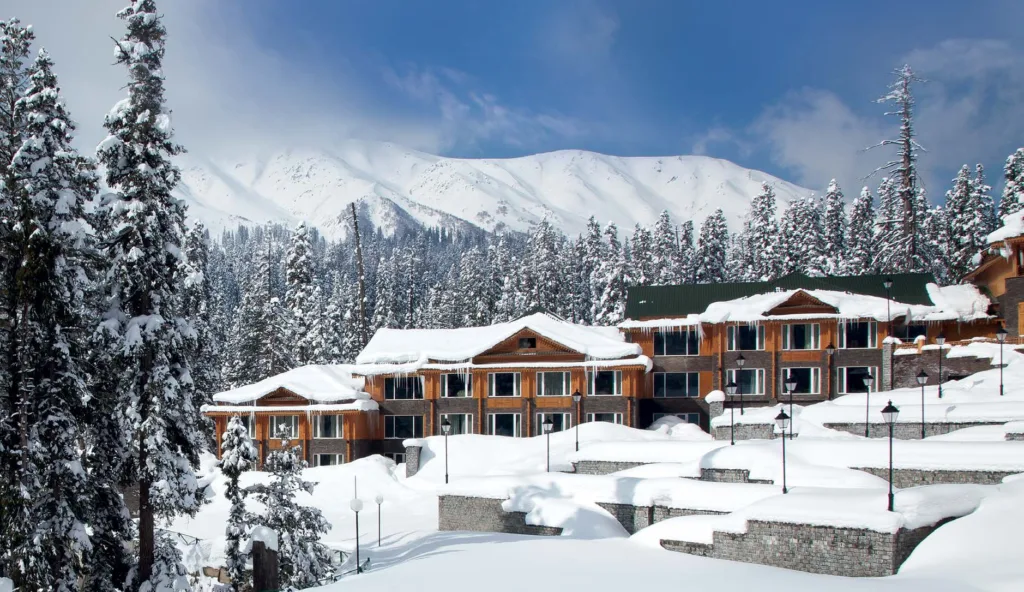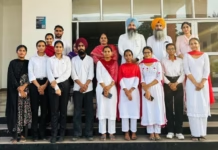Much awaited snow after ‘Chillai Kalan’ turns Kashmir into wonderland-Hanief
Mohammad Hanief/ February 6,2024
Most parts of the Kashmir, mainly plains, received season’s first snowfall on last Wednesday as winter’s harshest period – Chillai Kalan – went snowless and registered as driest winter spell ever. The “snowless” winter had brought disappointment to locals and tourists alike.
The much-awaited snowfall has brought cheer to the people of the Kashmir and turned the Valley into a winter wonderland. Most parts of the Kashmir, mainly plains, received season’s first snowfall as winter’s harshest period – Chillai Kalan – went snowless and registered as driest winter spell ever.
Late Wednesday night snowfall, in plains including Srinagar, brought cheer to people and caught them by surprise with netizens sharing videos and photos on various social media sites expressing joy. Chillai Kalan, the 40-day harshest winter period that starts on December 21 every year and ends on January 31, went almost snowless with the Kashmir Valley witnessing unusual weather conditions this winter.
Even famous ski resort Gulmarg in north Kashmir, other tourist attractions like Pahalgam in south Kashmir and Sonamarg in central Kashmir also received less or no snowfall during this 40-day winter period, a rare phenomenon seen during winters in the Kashmir Valley.
Kashmir in winter is a breathtakingly beautiful destination with a picturesque wonderland covered with pristine winter snow. The snow capped mountains and frozen lakes create a stunning backdrop against the clear blue skies, which makes it a perfect destination for winter lovers.
Kashmir in winter not only evolves as a bustling hub for winter sports and activities in the season but is also known for its region’s rich cultural heritage and warm hospitality, making it a must-visit winter destination. Although, there are multiple places and activities to visit in Kashmir during the winter season.
There are a plethora of places to visit in Kashmir during the winter, and each of them offers something unique. Snow-draped mountains create the perfect backdrop for ancient shrines, frozen lakes beckon adventurers for a chilly walk, and the bare Chinar trees stand as silent sentinels of the changing seasons. Every nook and corner of Jammu and Kashmir in winter holds a story waiting to be discovered.
While the views alone can leave one spellbound, there’s no shortage of things to do in Kashmir during the colder months. From thrilling snow sports to savouring traditional Kashmiri winter dishes, there’s something for every traveler’s taste.

The “snowless” winter had brought disappointment to locals and tourists alike. No snow in the Valley had taken sheen of it, which otherwise would mesmerise people with white landscape during winter. Wednesday’s snowfall, however, brought Kashmir alive, ending the longest dry spell in the plains as most parts received season’s first snowfall.
The absence of snow at major tourist attractions and other parts of the Kashmir had also disappointed tourists with many cancelling their planned trips. The fresh snowfall has now infused a new life, turning the Kashmir Valley into white picturesque landscape that it is known for during winters.
Though the harsh winter period in Kashmir commences from 21st of December but the preparations are made in autumn months of September and October because people are aware about the miseries it brings with its onset. Making of charcoal, drying of vegetables to make Alla heache( Dried bottle guard), Wangan heache (Dried brinjal), Reantwangan heache (Dried tomatoes), Hoch palak (dried spinach), Hokh hakh (Dried collard green), Heand (Dried Dandlion leaves) etc etc have been the centuries old traditional practice of Kashmiris. Though the drying of vegetables has now been declining among masses but still a large proportion of Kashmiri population is making these delicious dishes in this period.
Winter is the coldest season of year. During this season the sun loses its heat and brightness and often remains hidden behind clouds, fog or mist. The temperature is usually around freezing point. It’s usually a cruel and an unpleasant season though it has a charm of its own.
After a prolonged dry weather, the glaciers have melted, there was hardly any snow left on the mountains before the recent snowfall. Snow is really important for the sustenance. without it, water resources would have dried up, it could have hit our horticulture especially fruit produce, and the dry spell resulted in many respiratory ailments.
The onset of snowfall across parts of Jammu, Kashmir, Himachal Pradesh, and the Himalayas has infused a wave of optimism among farmers, fruit growers, and the tourism industry.
Snowing across Kashmir valley is very beneficial for the farmers and orchardists. People in Kashmir were under distress because there was no snow in the plains which could have meant doom for the horticulture produce, However, the snowfall now has infused a new life into it and hoped there is more snow in the days to come.
This climatic turnaround is particularly welcome after a prolonged dry spell that led to significant crop losses for farmers and fruit and vegetable growers. The fresh snowfall is anticipated to be beneficial for Rabi crops.
The tourism sector, which has been languishing due to a lack of snow, is now looking forward to a boost in tourist arrivals. Key resorts like Gulmarg, Pahalgam, Sonamarg have experienced moderate snowfall, while scattered rains have quenched the mid and low hills.
Despite the cold wave conditions and dense fog in some areas, the snowfall has raised hopes for a revival in business as local hoteliers are optimistic, expecting an increase in tourist footfall and better business in the days ahead. The snowfall has also brought joy to the tourism sector, where stakeholders had been facing challenges due to the absence of snow.
Tourist destinations such as Gulmarg, Pahalgam and Sonamarg are bustling with visitors, including children, who are reveling in the snowy landscapes as the meteorological department’s forecast suggests light to moderate rain or snow in many parts of the union territory, with heavy snowfall expected over higher reaches like Kupwara, Bandipora, Baramulla, Ganderbal, Shopian, Kulgam, and Anantnag districts in the coming days.
The recent snowfall marks a significant shift from the snow drought experienced earlier this winter, which had raised concerns about the local ecology and livelihoods. With the current weather patterns, there is renewed hope for the region’s agriculture, water resources, and economic activities dependent on winter tourism.
The cold weather outdoors calls for some warm and hearty meals indoors. Wazwan is not just a meal; it’s a celebration of flavours and culinary art. A multi-course meal, it’s something that every traveler must relish.
Winter in Kashmir is not just about cold and snow; it’s also the season of festivities. Festivals in Kashmir light up with their traditional festivals. Whether it’s a local fair, a religious ceremony, or a cultural festival, the spirit is contagious.
Winter in Kashmir transforms the valley into a magical realm adorned with pristine snow. The landscape, veiled in white, captivates with its ethereal beauty. This season, from November to February, is marked by bone-chilling temperatures, often reaching sub-zero levels. Yet, the Kashmiris embrace the cold with warmth in their hearts. Kashmir captivating visitors with its natural allure and cultural richness as it remains an enchanting destination that lingers in the hearts of those fortunate enough to experience its ethereal charm.

NOTE: The views expressed are personal . The author can be mailed at [email protected]/ X (Twitter): @haniefmha












